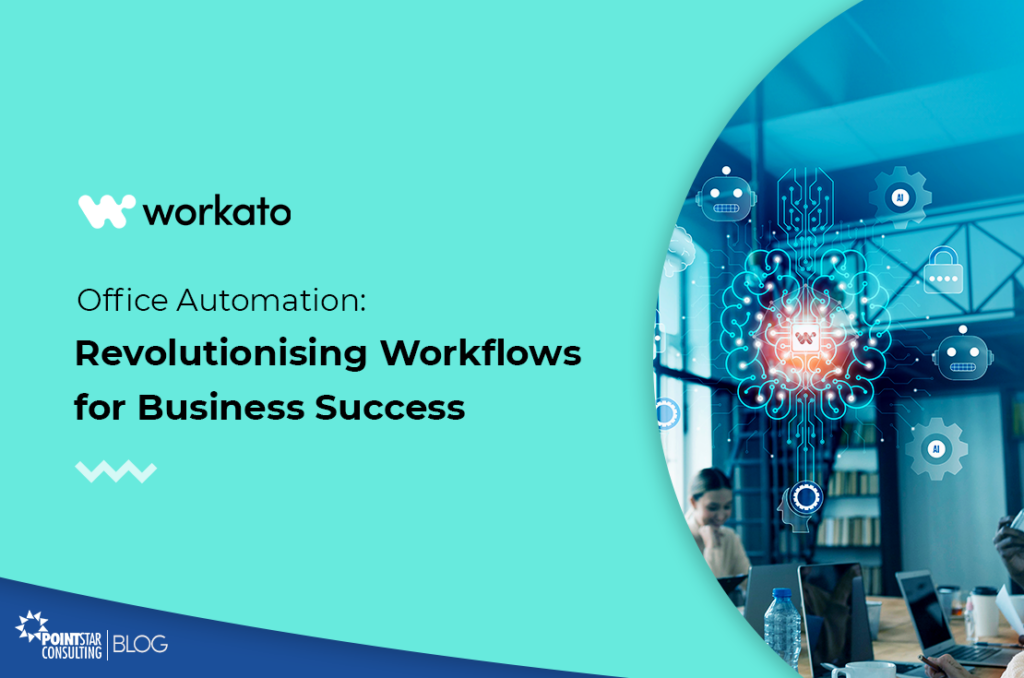In today’s fast-paced business landscape, “office automation” isn’t just a buzzword; it’s a practical solution to a host of challenges. Imagine your team burdened with tedious, error-prone tasks that not only consume time but also impact your bottom line. Manual processes can lead to operational issues, disengaged employees, and financial losses.
However, there’s a silver lining – office automation. It doesn’t just streamline these processes; it sparks innovation within your team. By automating routine tasks, it frees your employees to reimagine their roles, focusing on strategic endeavours.
In this article, we’ll explore the transformative impact of automating both front and back office workflows through real-world examples. But first, let’s define what office automation truly entails.
What is Office Automation?
Office automation simplifies and enhances various tasks and processes within a business environment, encompassing both customer-facing tasks in the front office (such as managing customer interactions, processing orders, and handling inquiries) and internal administrative tasks in the back office.
This is achieved by automating specific tasks when certain events occur, triggering predefined actions. The result? A more efficient and integrated workflow that spans across different applications, data sources, and employees. This automation not only increases productivity but also reduces errors, leading to a significant enhancement in overall operational efficiency.
Benefits of Office Automation
Implementing office automation offers numerous advantages for your organisation:
Saves Time
Office automation eliminates manual data entry and minimises the need for employees to constantly switch between applications which takes a lot of time. This time-saving not only enhances efficiency but also boosts productivity by allowing employees to focus on more strategic tasks.
Reduces Errors
Manual entry of data often results in human errors. Office automation significantly reduces the occurrence of human errors in both front and back-office processes, leading to improved accuracy, cost savings, and a more reliable operational environment.
Empowers Decision-Making
Office automation empowers your team with valuable guidance and insights, facilitating informed decision-making. It ensures that critical insights are not overlooked or misinterpreted, simplifying the process of taking necessary actions when required.
Enhances Employee Experience
Employees are more likely to experience a sense of fulfillment when their responsibilities switches towards strategic tasks which contributes to the growth of their career. Introducting automation allows employees to ride the crest of the technological wave and position them for a fulfilling future-centric career.
Boosts Customer Satisfaction
Office automation’s benefits extend beyond the workplace, directly impacting clients. It expedites issue resolution, and enhances customer support. Engaged and satisfied employees, a result of office automation, are more likely to take actions that contribute to customer happiness.
Office Automation Technologies
When evaluating office automation solutions, selecting the right technology is critical to achieving your goals. Two standout options are:
1. Integration Platform as a Service (iPaaS):
IPaaS is a cloud-based platform designed to streamline the integration of various software applications and systems, including both cloud-based and on-premises solutions. It empowers the creation of seamless data flows and connections among these applications, facilitating efficient data exchange and process automation.
IPaaS solutions offer a cloud-centric approach to integrating diverse software applications and systems, relying on APIs for robust and high-performing integrations. They exhibit resilience to changes in application UIs and enable real-time data transfer. However, it’s important to note that iPaaS solutions may have limitations when it comes to building end-to-end automations and may require some learning to optimise usability. Therefore, businesses should conduct a thorough assessment to ensure iPaaS aligns with their integration and automation requirements.
2. Enterprise Automation Platform:
For organisations seeking a comprehensive solution that overcomes the limitations of other tools, the enterprise automation platform is the ideal choice. It delivers a user-friendly experience, featuring low-code/no-code capabilities that make it accessible even to non-technical staff. Additionally, this platform boasts robust security measures and governance controls, safeguarding your data, applications, and processes.
Unlocking Office Automation Excellence with Workato
In the realm of office automation, there exists a true game-changer: Workato. Workato stands as a testament to the power of modern automation technology, offering a platform designed to revolutionise your workflows and drive unparalleled business success. What sets Workato apart is not just its reputation; it’s the user-friendly interface, and the extensive capabilities it brings to the table. With Workato, your organisation can embark on a journey of seamless integration, automation, and optimization that spans across both front and back-office processes.
Final Thoughts
In conclusion, office automation isn’t just a choice; it’s a necessity for businesses seeking to optimise operations, boost productivity, and enhance the overall employee and customer experience. The technology you choose to navigate this journey matters. With Workato, you’re not merely automating tasks; you’re unlocking the full potential of your organisation’s capabilities. Embrace automation and let Workato propel your digital transformation to new heights.



